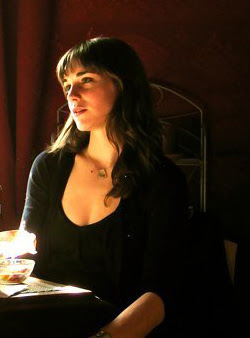From the NY Times. The Perry's Tot Navy Strength Gin makes a good, if dangerous, Gin & Tonic:
A Brooklyn Distillery Lets You Order a Drink
By Robert Simonson
Spaces next to distilleries where you can sample liquor are not unusual. They’re called tasting rooms. Spaces where you can enjoy a mixed drink made with that liquor, or other spirits not produced at that distillery — now, that’s unusual.
In early December, Allen Katz and Tom Potter, the founders of the New York Distilling Company in Williamsburg, Brooklyn, opened the Shanty, a tavern under the same roof as the distillery. Sitting at the bar, in fact, you can gaze through a large plate-glass window onto the 1,000-liter, German-made still that produces the company’s two new products, Dorothy Parker American Gin and Perry’s Tot Navy Strength Gin.
Mr. Katz, who is director of mixology and spirits education at Southern Wine and Spirits and a familiar figure in the spirits and cocktail world, said the saloon was long in planning. “A tasting room is lovely,” he said. “It’s useful and a nice retail setting.”
But the company is not using it for retail. “We want to support local retailers,” Mr. Katz said. “We want people to come here and say, ‘Hey, where can we get your gins?’ We’ll give you a list of stores. You cannot buy the gin here.”
The Shanty has a separate entry on Richardson Street, around the corner from the distillery’s official Leonard Street address. Its bar is as well-stocked as any in Brooklyn and, while drinks featuring the distillery’s two gins are amply featured on the menu, you can order any cocktail or spirit you wish without shame.
The distillery has a special farm distiller’s license from New York State that allows it to run a bar — granted because 100 percent of the grains used for its rye whiskey will come from New York farmers. “I can’t open a bar across the street,” Mr. Katz said. “I can’t open a bar in another borough. I can open a bar in the same bonded facility that is our licensed distillery.”
Putting in a shift or two at the Shanty are some of the best bartenders in Brooklyn, including Brad Farran (of Clover Club), Katie Stipe (Vandaag,Frankies 570) and the head barman, Nate Dumas (formerly of Prime Meats). Mr. Katz himself tends bar twice a week.
Mr. Dumas was a natural choice to head the anomalous bar. “He’s a one-of-a-kind person, in that he is an extraordinary barman, but has also spent a year in Scotland going through the Heriot-Watt University brewing and distilling program,” Mr. Katz said. “It was a no-brainer to have him be the head bartender but work on both sides of the wall. He’s got some wonderful contributions in mind.”
The distillery has already bought a year’s worth of rye from the New York farmers it has contracted with, and plans to start distilling it in a month’s time. But don’t expect that rye whiskey to grace the bar anytime soon; unlike other boutique distillers, Mr. Katz and Mr. Potter are not going to rush out a lightly aged liquor, but intend to wait until it is at least three years old. In the meantime, the Shanty will provide a financial cushion for that waiting game. “The bar, I hope, will mean revenue that we can invest in rye whiskey production,” Mr. Katz said.
There will, however, be one rye product out as early as next year. The distillery plans to release a rock and rye, a once-popular American liqueur that mixes whiskey and rock candy with other flavorings. The two gins, meanwhile, are now available only in New York State.






























